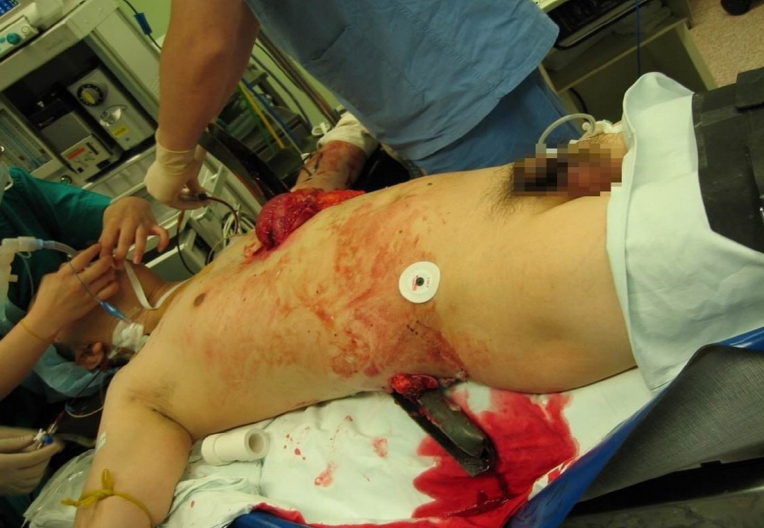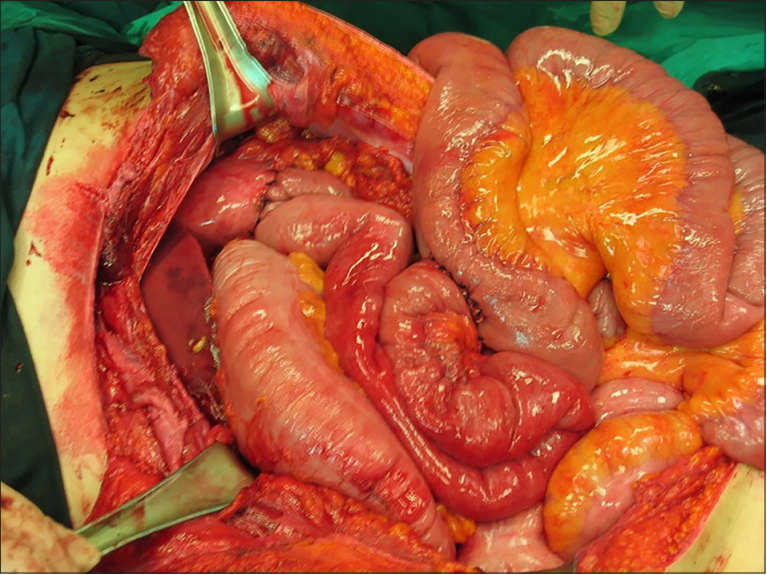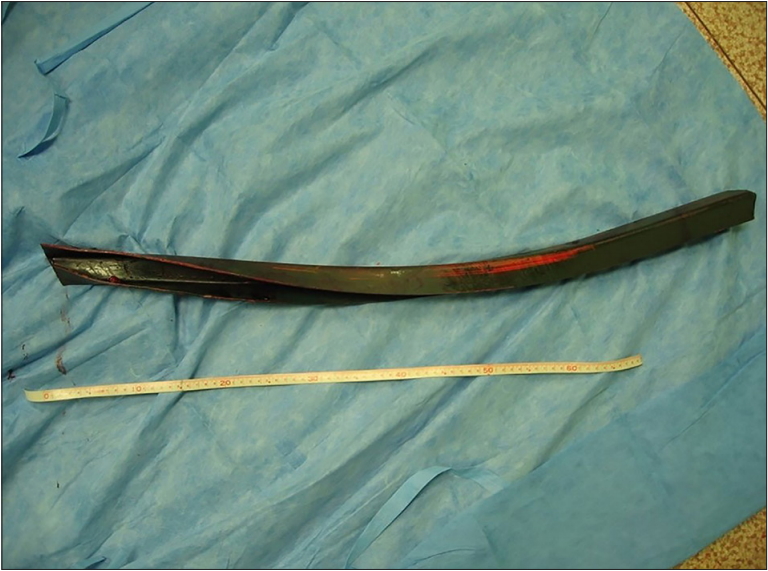 |
 |
- Search
| Trauma Image and Procedure > Volume 5(1); 2020 > Article |
|
Abstract
Penetrating injuries and blunt injuries present different damage mechanisms. Generally, a blunt injury causes severer damage to tissues and organs than a penetrating injury. We report a case of a penetrating injury involving organ damage due to a large impaled foreign body wherein the penetrating injury was severer than a blunt injury.
Penetrating injuries are relatively rarer than blunt injuries among Korean traumatic casualties [1]. Penetrating injuries and blunt injuries typically present different damage mechanisms. Generally, a blunt injury results in severer damage to tissues and organs than a penetrating injury [2]. However, in the present case, the patient sustained a penetrating injury involving organ damage due to a large impaled guardrail section and the injury was severer than a blunt injury.
A 31-year-old man was sent to our regional trauma center after crashing into a guardrail while driving. The patient was conscious, but his initial vital signs were unstable: systolic blood pressure (BP), 67 mmHg; diastolic BP, 38 mmHg; and pulse rate, 98 beats/min. The penetrating injury was observed from the epigastric area to the right flank area of the abdomen (Fig. 1). The patient was immediately shifted to the operating room without imaging, and emergency exploratory laparotomy was performed on suspicion of hemoperitoneum and peritonitis. The intraoperative diagnosis was pancreatic laceration, gastric rupture, and mesenteric rupture due to an impaled guardrail section (Fig. 2). The surgery proceeded as follows: subtotal gastrectomy, Roux-en-Y gastrojejunostomy, primary repair of the pancreas, and bleeder ligation (Fig. 3). Fig. 4 shows the guardrail section that was surgically removed from the patient’s body. Postoperatively, the patient was admitted to the intensive care unit. Subsequently, the patient’s vital signs stabilized and he was transferred to the general ward for conservative management. On postoperative day 80, the patient was discharged in good general condition without any specific symptoms.
Penetrating injuries are the main cause of preventable deaths and are associated with significant morbidity and mortality [3]. Abdominal organs are particularly vulnerable to penetrating injuries, typically characterized by multiple injuries to the gastrointestinal tract, solid organs, and vascular structures [4]. The prognosis of patients with penetrating injuries is variable and depends on the severity of the injury, type of penetration, and time from the trauma to initial treatment [5]. Our report presents a case of penetrating injury caused by a large impaled foreign body. Although the intra-abdominal injury and hemorrhage due to the penetrating injury were severe, the patient survived due to prompt assessment and appropriate emergency surgery.
References
1. Hwang K, Jung K, Kwon J, Moon J, Heo Y, Lee JCJ, et al. Distribution of trauma deaths in a province of Korea: is “trimodal” distribution relevant today? Yonsei Med J. 2020;61(3):229-34.



2. Agbroko S, Osinowo A, Jeje E, Atoyebi O. Determinants of outcome of abdominal trauma in an urban tertiary center. Niger J Surg. 2019;25(2):167-71.



3. Cardi M, Ibrahim K, Alizai SW, Mohammad H, Garatti M, Rainone A, et al. Injury patterns and causes of death in 953 patients with penetrating abdominal war wounds in a civilian independent non-governmental organization hospital in Lashkargah, Afghanistan. World J Emerg Surg. 2019;14(1):51.














